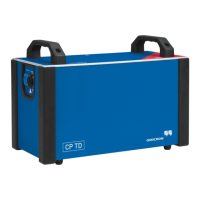Capacitance and DF Measurement of Circuit Breakers
111
9 Capacitance and DF Measurement of
Circuit Breakers
9.1 Introduction
The most common types of Circuit-Breakers (CB) are:
• Oil Circuit-Breakers (OCB's) in dead tank design
• Oil poor Circuit Breakers in life tank design
• Air-Blast Circuit-Breakers
• SF6 Circuit-Breakers
• Vacuum Circuit-Breakers
• Air Magnetic Circuit-Breakers
• Oil Circuit Reclosers
Power and dissipation factor testing provides a means of verifying the integrity
of the insulation. Circuit breakers in dead tank design have high-voltage
bushings, the test is described in chapter 7 ”Capacitance and DF Measurement
on High-Voltage Bushings” on page 91.
9.2 Oil Circuit Breakers (Dead Tank)
Dead tank oil circuit breakers are composed of a steel tank filled with insulating
oil. A typical three-phase oil circuit breaker has six bushings. Three bushings
channel the three-phase line currents to a set of fixed contacts. Three movable
contacts, actuated simultaneously by an insulated rod, open and close the
circuit. When the circuit breaker is closed, the line current for each phase
penetrates the tank by way of one bushing, flows through the first fixed contact,
the moveable contact, the second fixed contact, and then out by the second
bushing. The most important insulation in medium and high-voltage outdoor
power switchgear is that of the bushings themselves, the guide assembly, the lift
rods, and, in the case of oil breakers, the oil. Measurements should be made
from each bushing terminal to the tank ground with the breaker open and from
each phase (each pair of phase bushing terminals) to the grounded tank with the
breaker closed.

